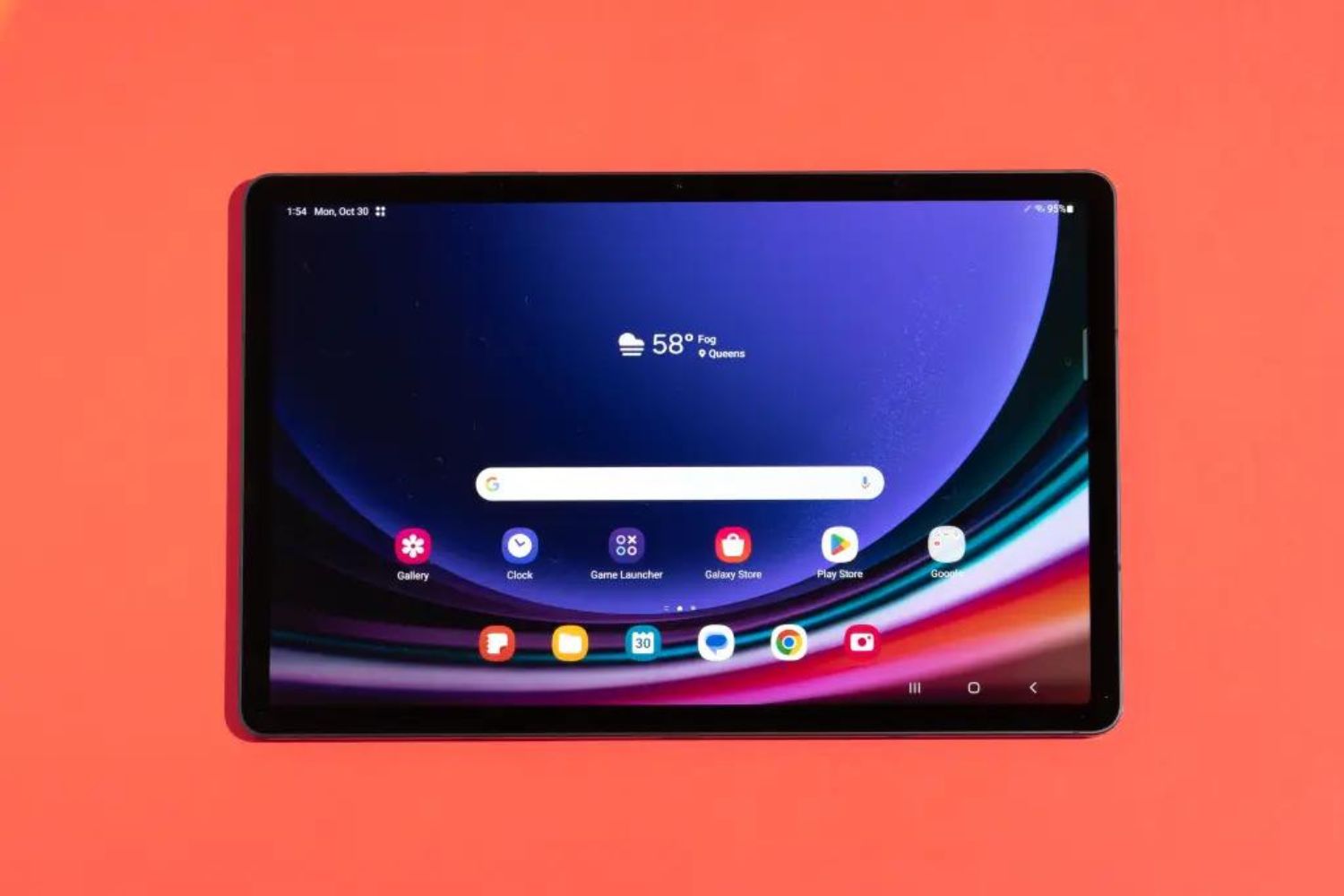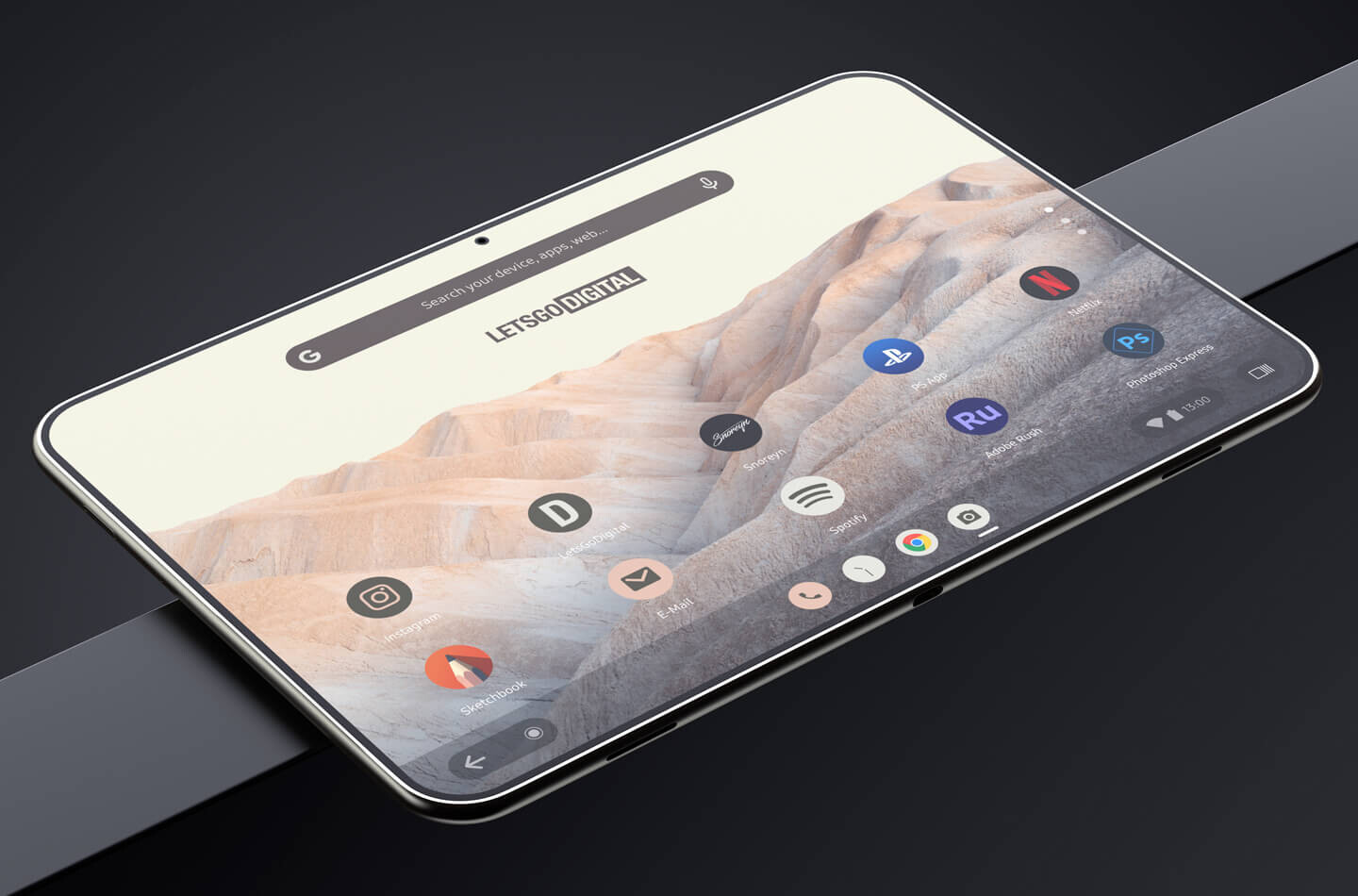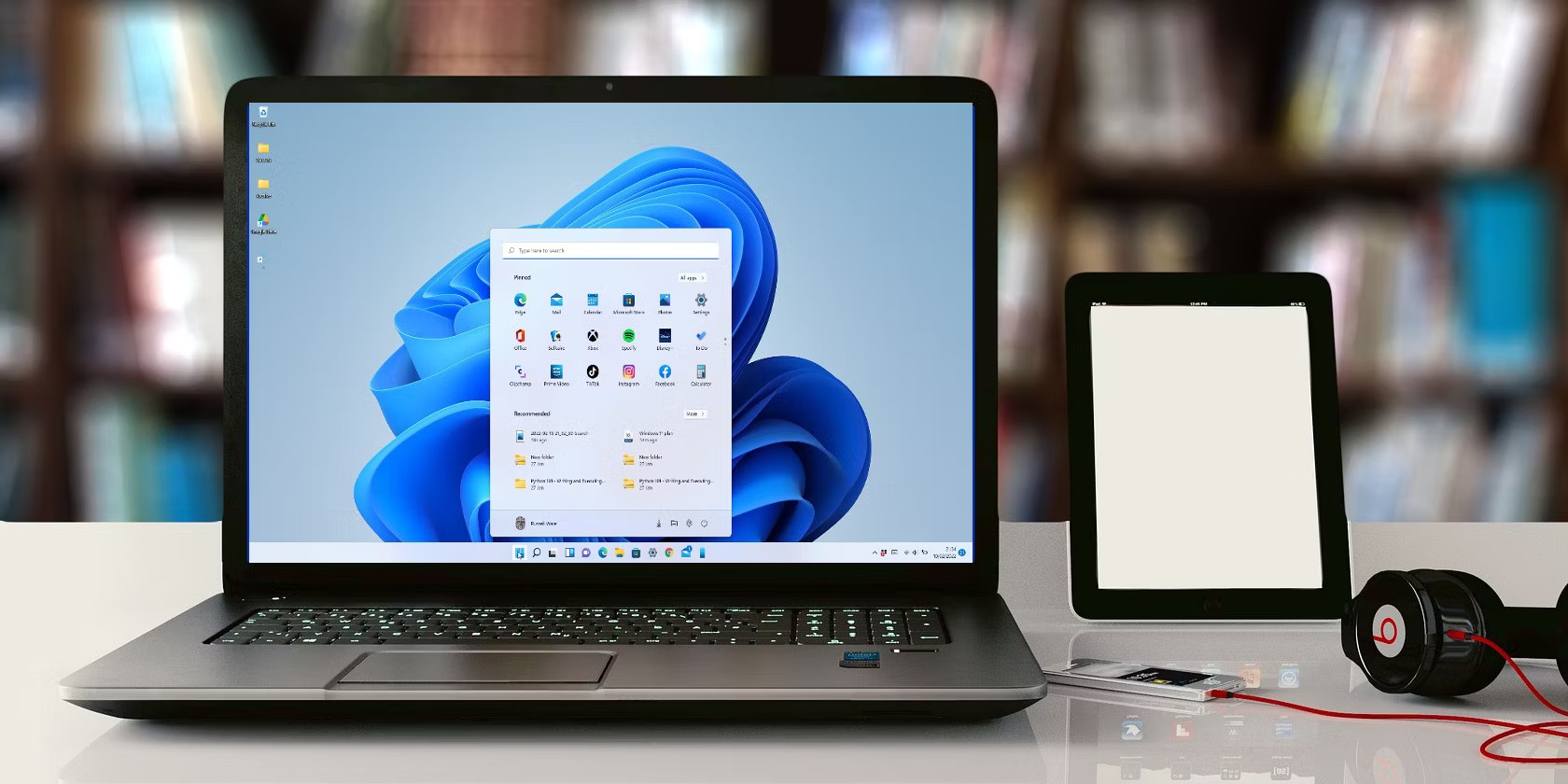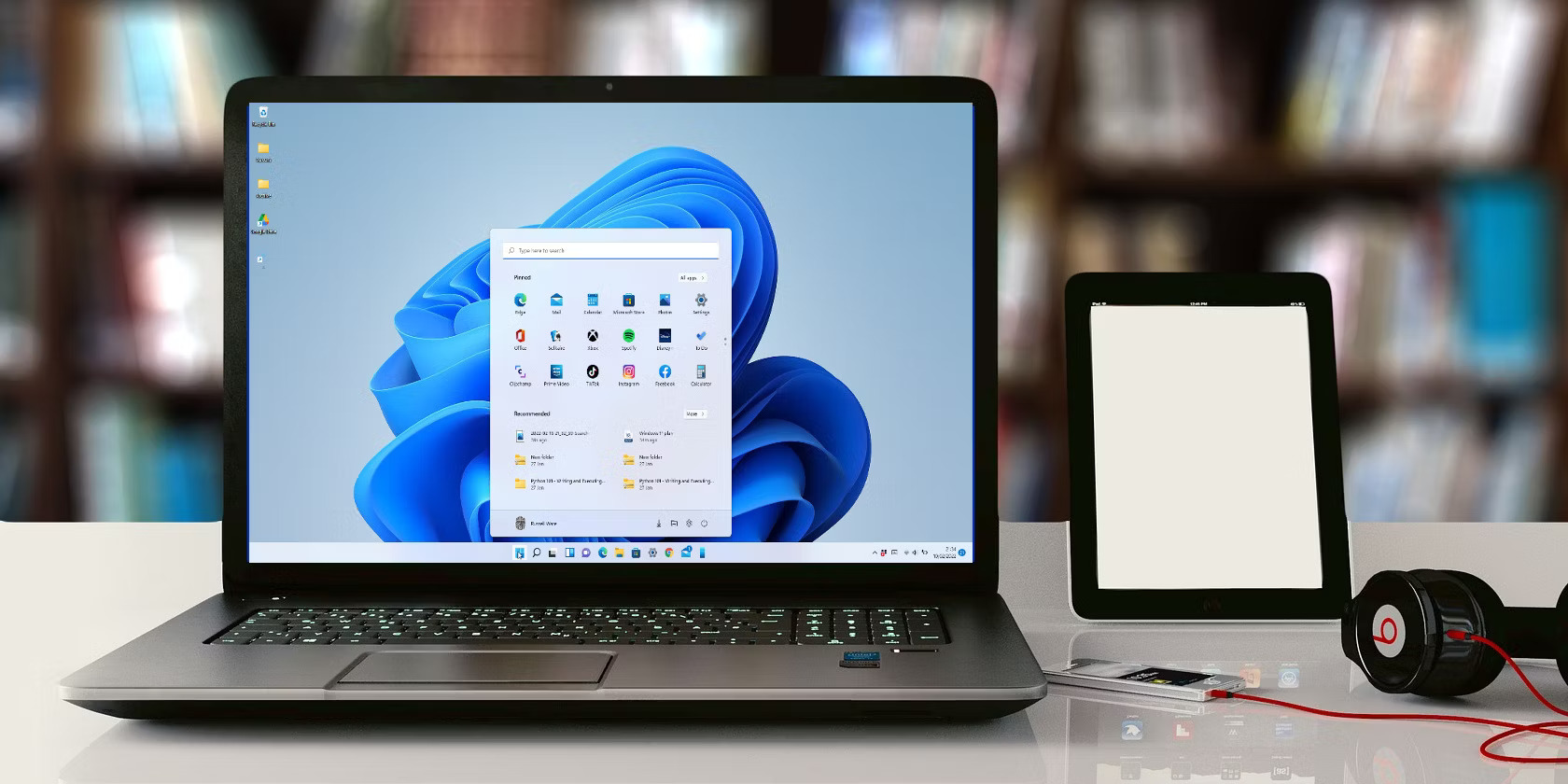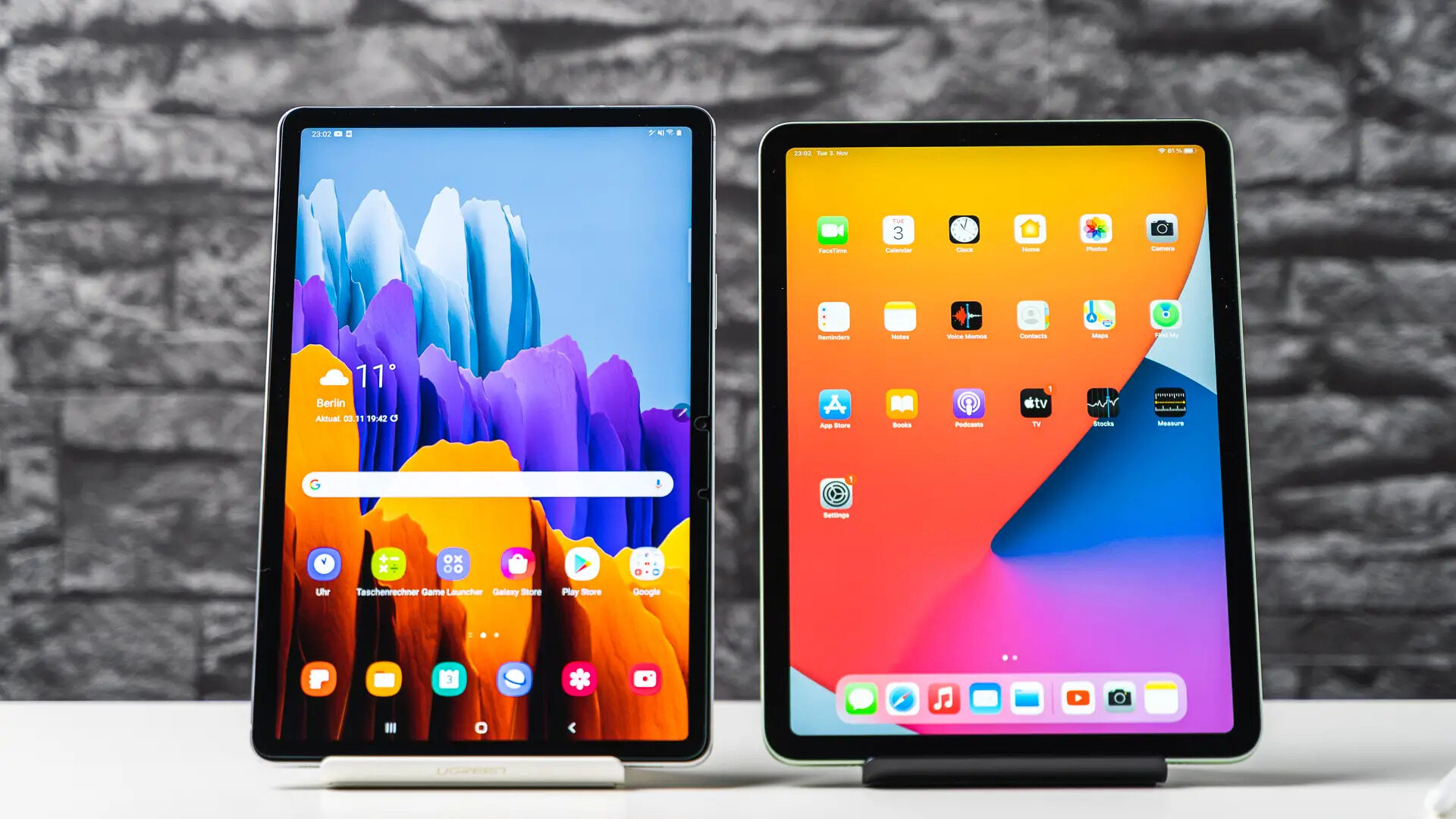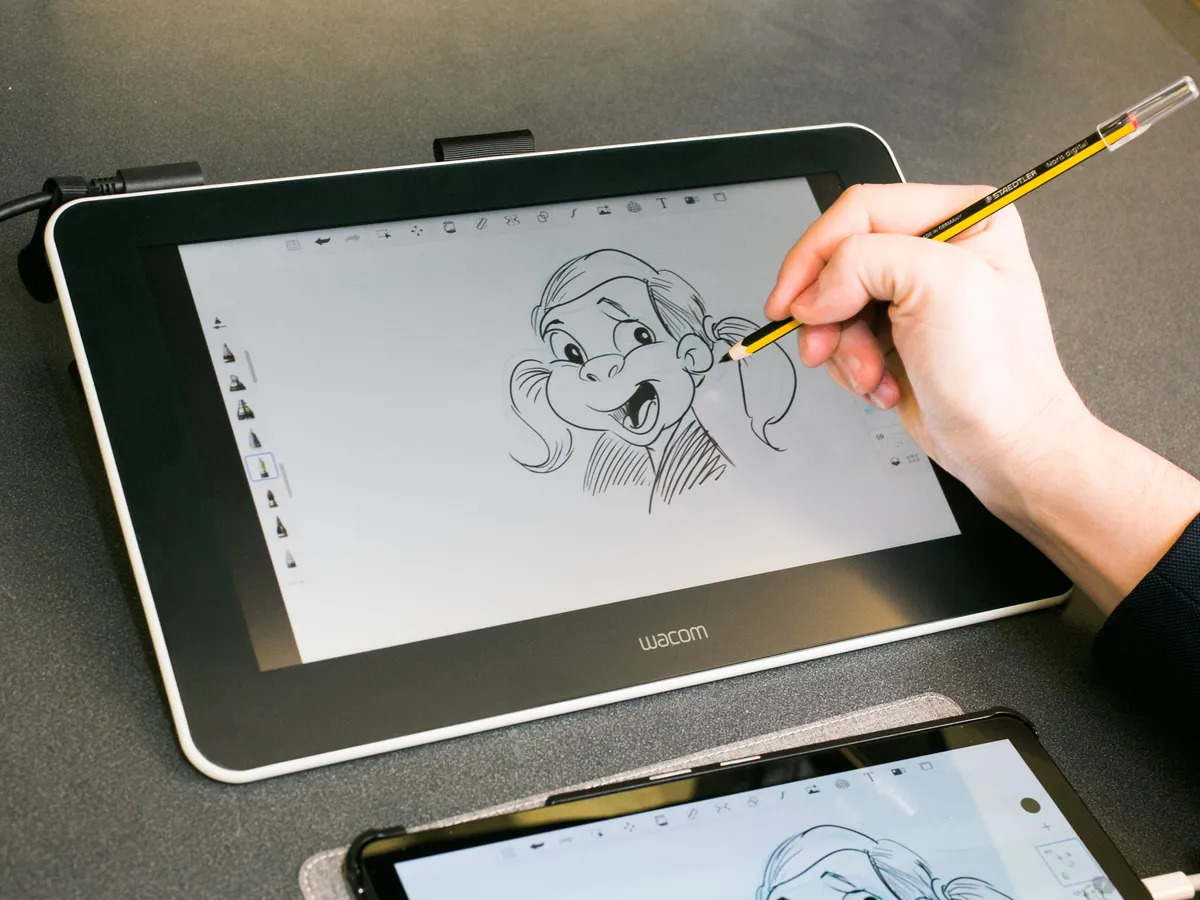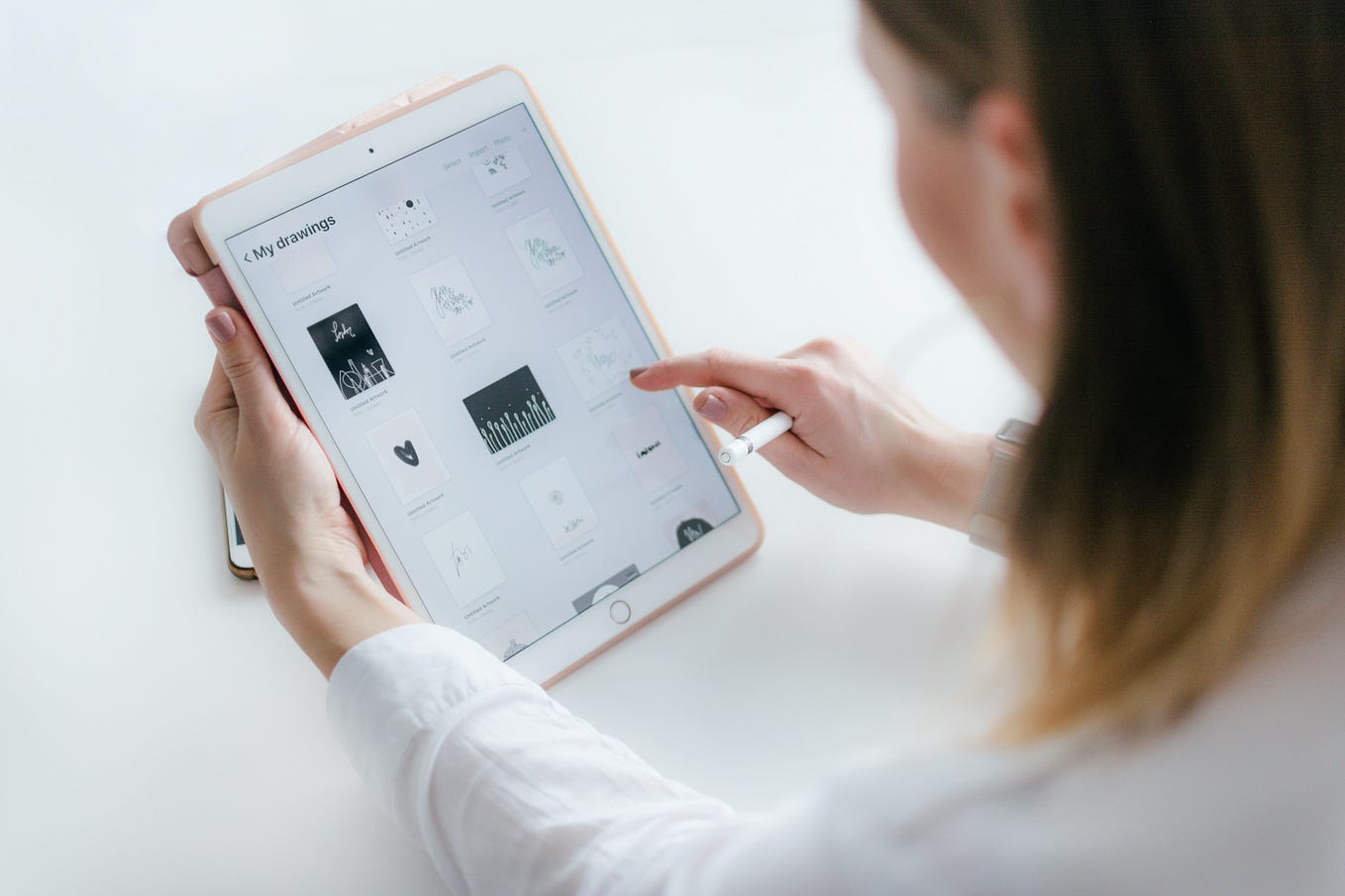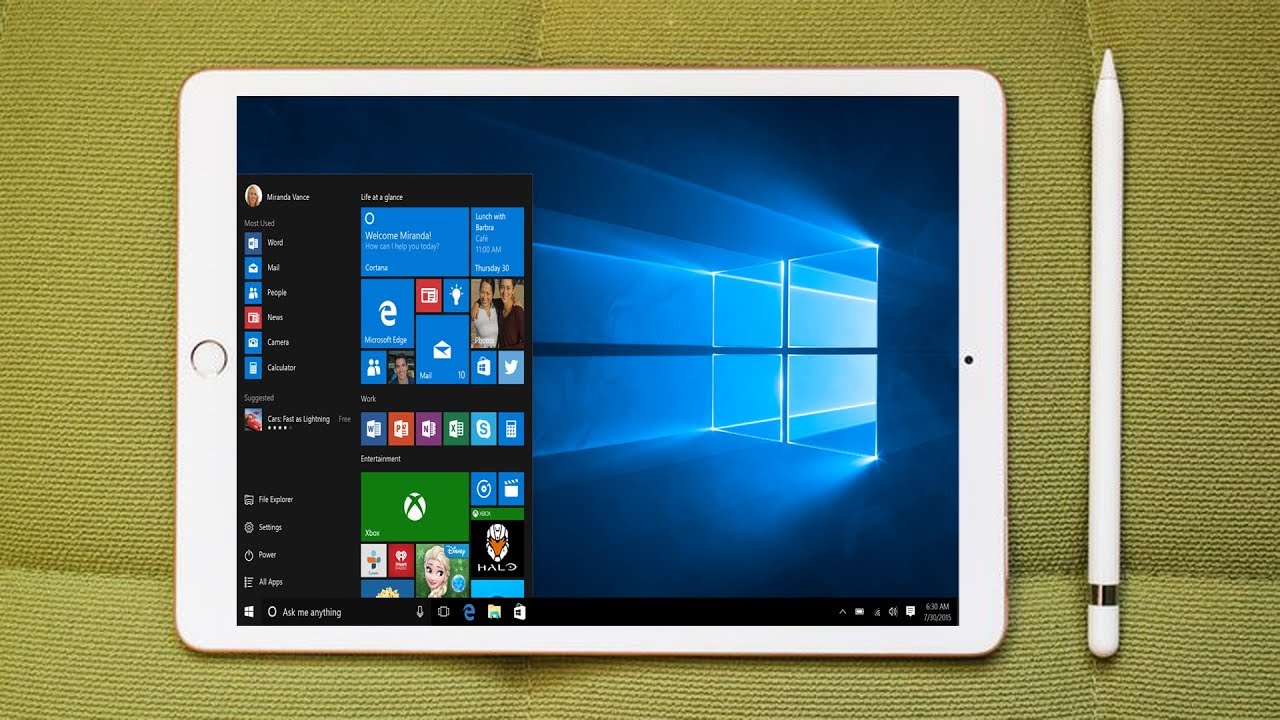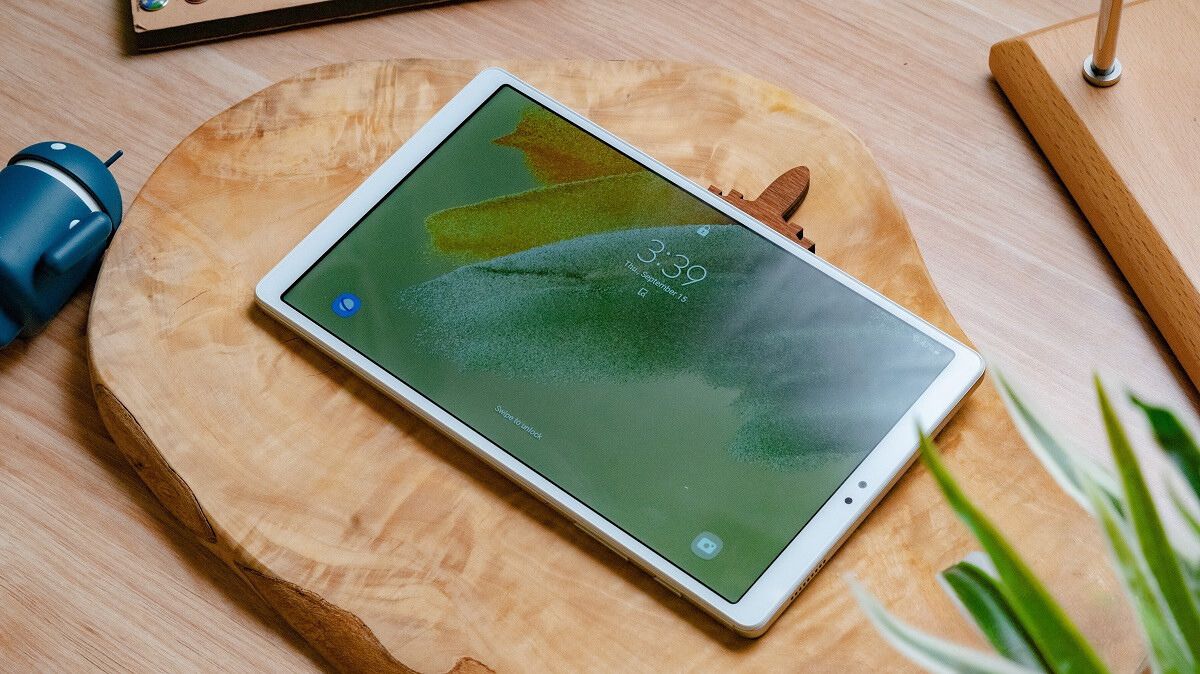Key Features of Android Tablets
Android tablets offer a wide range of features that make them a popular choice among tech-savvy individuals. Whether you’re using it for work, entertainment, or both, here are some key features that set Android tablets apart:
1. Versatility: One of the primary advantages of Android tablets is their versatility. With the ability to customize your home screen, widgets, and app layout, you can personalize your tablet to suit your needs and preferences.
2. Large Display: Most Android tablets come with a large display, typically ranging from 7 to 12 inches. This ample screen size provides a comfortable viewing experience for browsing the web, watching videos, or reading e-books.
3. Powerful Performance: Android tablets are equipped with powerful processors, allowing for smooth multitasking and efficient performance. Whether you’re running multiple apps simultaneously or playing graphics-intensive games, an Android tablet can handle it all.
4. Expandable Storage: Unlike some other devices, Android tablets often come with expandable storage options. This means you can easily add more storage space by inserting a microSD card, giving you the freedom to store more files, photos, and videos.
5. Access to the Google Play Store: Android tablets give you access to the vast library of apps available on the Google Play Store. From productivity tools to entertainment apps, there’s something for everyone, making your tablet truly versatile.
6. Customizable User Interface: Android tablets offer a highly customizable user interface, allowing you to personalize your device to your liking. You can change wallpapers, create app folders, and even add shortcuts to your favorite apps for quick access.
7. Seamless Integration with Android Ecosystem: Android tablets seamlessly integrate with other Android devices, such as smartphones and smartwatches. This allows for easy synchronization of your contacts, calendars, and other data across devices, enhancing productivity.
8. Multi-User Support: Some Android tablets support multiple user profiles, making it easy for each member of the household to have their own personalized experience. This is especially useful if you want to keep your apps, settings, and data separate from others using the same tablet.
Overall, Android tablets offer a multitude of features that cater to various needs and preferences. Their versatility, powerful performance, and access to a vast app ecosystem make them a valuable tool for work, entertainment, and everything in between.
Whether you’re a student, professional, or casual user, an Android tablet can be a worthwhile investment that provides endless possibilities and enhances your digital experience. It’s no wonder why Android tablets continue to be in high demand among tech enthusiasts worldwide.
Differences between Android Tablets and iPads
When it comes to choosing a tablet, two popular options on the market are Android tablets and iPads. While they may seem similar at first glance, there are several key differences that set them apart. Let’s delve into the dissimilarities between these two tablet platforms:
1. Operating System: One of the most significant differences between Android tablets and iPads lies in their operating systems. Android tablets run on the Android operating system, developed by Google, while iPads operate on iOS, developed by Apple. Each operating system has a unique interface, features, and app ecosystem.
2. Customization: Android tablets are known for their high degree of customization. Users have the freedom to personalize their device’s appearance, home screens, widgets, and more. In contrast, iPads have a more streamlined and uniform interface, limiting customization options.
3. App Availability: While both platforms have a wide range of apps available, there are differences in their app stores. Android tablets have access to the Google Play Store, which boasts a vast collection of apps, including both free and paid options. iPads, on the other hand, rely on the Apple App Store, which is known for its curated selection of high-quality apps.
4. Hardware Options: Android tablets offer a diverse range of hardware options from various manufacturers. This means you have a wider selection of tablets with different specifications, sizes, and features to choose from. In contrast, iPads are consistently made by Apple and come in a limited number of models with specific hardware configurations.
5. Integration with Ecosystem: If you’re already using other Apple devices such as iPhones, Macs, or Apple Watches, an iPad seamlessly integrates into this ecosystem. This allows for easy synchronization, file sharing, and seamless connectivity across devices. Android tablets can integrate with other Android devices but may not offer the same level of seamless integration as iPads do within the Apple ecosystem.
6. Price Range: Android tablets tend to have a wider range of pricing options, from budget-friendly to higher-end devices. This allows users to find a tablet that matches their budget and needs. iPads, however, are typically higher priced and fall into the premium tablet category.
7. Software Updates: Android tablets often have a larger range of manufacturers, which can sometimes result in delayed or inconsistent software updates. iPads, being solely produced by Apple, tend to have more regular and timely software updates.
Both Android tablets and iPads have their own strengths and weaknesses. Android tablets offer more customization, a wider range of hardware options, and a diverse app ecosystem. iPads, on the other hand, excel in offering a seamless integration within the Apple ecosystem, consistent software updates, and a curated selection of high-quality apps.
When choosing between an Android tablet and an iPad, it’s essential to consider your specific needs, preferences, and budget. Whether you prioritize customization, integration, or specific apps will ultimately help determine which tablet platform is the right fit for you.
Android Tablet vs. Android Phone: Which One to Choose?
When it comes to choosing between an Android tablet and an Android phone, there are several factors to consider. Both devices offer their unique advantages and functionalities, so it’s important to assess your needs and preferences to make an informed decision. Here’s a comparison to help you determine which device suits you best:
Portability: Android phones are undoubtedly more portable than tablets. With their compact size and lightweight design, they can easily fit in your pocket or purse, allowing for on-the-go usage. Tablets, on the other hand, are larger and bulkier, making them more suitable for stationary usage or carrying in a bag.
Screen Size and Display: If you prioritize a larger screen for media consumption, gaming, or productivity, then an Android tablet may be the better choice. Tablets generally offer larger display sizes, ranging from 7 to 12 inches, compared to the smaller screens of Android phones. However, if portability is crucial, a phone’s smaller screen can still provide a satisfactory viewing experience.
Functionality and Productivity: Tablets offer a more spacious screen and increased processing power, making them well-suited for productivity tasks. Whether you need to work on documents, multitask between apps, or create digital art, a tablet’s larger size and capabilities can enhance your productivity. Android phones, on the other hand, are more focused on smaller, on-the-go tasks such as messaging, calling, and quick internet searches.
Communication and Connectivity: While both Android tablets and phones offer communication capabilities, phones are specifically designed for it. With built-in features such as cellular connectivity and superior calling abilities, phones take the lead when it comes to staying connected. Tablets typically offer Wi-Fi connectivity and may have the option of cellular connectivity, but they may not provide the same level of seamless communication as phones.
Cost: In terms of cost, Android phones generally have a wider range of options to fit various budgets. Entry-level and mid-range phones can be more affordable compared to tablets. Tablets, on the other hand, tend to be pricier, especially if you opt for higher-end models or those with advanced features.
Multi-functionality: While Android phones are primarily designed for communication on the go, they also offer a wide range of features and apps that can be used for various purposes, including entertainment, gaming, and productivity. Tablets excel in providing a larger screen and more immersive experience for media consumption, gaming, and reading.
Overall, the choice between an Android tablet and an Android phone depends on your specific needs, preferences, and budget. If portability and communication on the go are crucial, an Android phone would be the ideal choice. If you prioritize a larger screen, enhanced productivity, and a more immersive media experience, an Android tablet is the way to go.
Consider how you plan to use the device, your preferred screen size, and the tasks you’ll be performing most frequently to determine which device will best meet your needs. There’s no one-size-fits-all answer, so take the time to assess your requirements and make an informed decision that aligns with your lifestyle.
Top Android Tablet Brands and Models
When it comes to Android tablets, several brands have made a mark in the market. Each offers its own unique features, specifications, and user experiences. Here are some of the top Android tablet brands and models worth considering:
1. Samsung Galaxy Tab S7: Samsung has been a leading player in the Android tablet market, and the Galaxy Tab S7 is one of their flagship models. It features a stunning 11-inch display, powerful processing capabilities, and support for the S Pen stylus, making it ideal for both work and entertainment.
2. Lenovo Tab P11 Pro: Lenovo has gained popularity with their Tab P11 Pro, which boasts a high-resolution 11.5-inch OLED display and powerful hardware. It offers a premium design, long-lasting battery life, and supports an optional keyboard attachment, making it a versatile option.
3. Google Pixel Slate: As the name suggests, the Google Pixel Slate is Google’s own Android tablet offering. It features a sleek design, sharp display, and impressive audio quality. Powered by Chrome OS, it also offers seamless integration with Google’s services and is compatible with a wide range of Android apps.
4. Amazon Fire HD 10: Although not strictly running on the vanilla Android operating system, the Amazon Fire HD 10 offers a compelling tablet experience. With a 10.1-inch Full HD display, affordable pricing, and access to a vast library of apps, movies, and e-books, it’s a popular choice for entertainment-centric users.
5. Huawei MatePad Pro: Huawei’s MatePad Pro boasts a sleek design and a vibrant 10.8-inch display. It features powerful hardware, including a Kirin processor, and supports Huawei’s M-Pencil stylus and keyboard, making it a great option for multitasking and creativity.
6. ASUS ZenPad 3S 10: The ASUS ZenPad 3S 10 offers a balance between performance and affordability. It features a high-resolution display, premium build quality, and ASUS’ ZenUI software, providing a smooth user experience.
7. Sony Xperia Tablet S: Sony’s Xperia Tablet S stands out for its excellent build quality and multimedia capabilities. It features a sharp display, audio enhancements, and a waterproof design, making it a great choice for entertainment enthusiasts.
These are just a few examples of the top Android tablet brands and models available in the market. As technology advances, new models will continue to emerge, offering even more features, capabilities, and innovative designs. When choosing an Android tablet, consider your specific needs, budget, and preferred features to find the brand and model that aligns with your requirements and delivers the optimal tablet experience for you.
How to Choose the Right Android Tablet for You
Choosing the right Android tablet can be a daunting task with the wide range of options available in the market. To ensure you make an informed decision, here are some factors to consider when selecting an Android tablet that suits your needs:
1. Intended Use: Determine how you plan to use the tablet. Are you primarily looking for a device for entertainment, productivity, or a combination of both? Different tablets excel in different areas, so understanding your intended use will guide you towards the right features and specifications.
2. Screen Size and Display: Consider the screen size and display quality that best suits your preferences. If you need a larger display for media consumption or productivity tasks, opt for a tablet with a screen size of 10 inches or more. Ensure the display quality is crisp and vibrant for an immersive viewing experience.
3. Performance and Processing Power: Look for a tablet with sufficient processing power and RAM to handle your intended tasks. This is especially important if you plan to multitask or use resource-intensive applications such as gaming or graphic design apps. Check for the latest processor, higher RAM capacity, and storage options that suit your needs.
4. Battery Life: Consider the battery life of the tablet, especially if you plan to use it on the go or for extended periods without access to a power source. Look for tablets with long-lasting battery performance to ensure uninterrupted usage throughout the day.
5. Storage and Expandability: Determine how much storage you require for your files, apps, and media. If you need ample storage, look for tablets with higher storage capacities or those that offer expandable storage options through microSD cards.
6. Connectivity Options: Consider the connectivity options that are important to you. Look for tablets that offer Wi-Fi and Bluetooth connectivity as a minimum. If you require cellular connectivity, ensure that the tablet supports the necessary network bands.
7. Brand Reputation and Support: Research the reputation and customer support of the brand you are considering. Look for established brands known for producing high-quality devices and providing good customer service. This will ensure better support, software updates, and a reliable overall experience.
8. User Reviews and Ratings: Take the time to read user reviews and ratings of the tablets you are interested in. This will give you insights into the real-world experiences of other users and help you identify any common issues or drawbacks.
9. Price and Budget: Set a budget for your tablet purchase and ensure you prioritize features accordingly. Android tablets come in a wide price range, so consider your budget and find a tablet that offers the best value for your money.
By considering these factors, you can narrow down your options and choose an Android tablet that best suits your individual requirements. Remember to prioritize features based on your intended use, and conduct thorough research to ensure you make an informed decision when investing in a new Android tablet.
Setting up Your New Android Tablet: A Step-by-Step Guide
So, you’ve just purchased a brand new Android tablet and are excited to dive into the world of endless possibilities. Setting up your new tablet is a straightforward process. Let’s go through a step-by-step guide to get you up and running in no time:
1. Charge your Tablet: Before you begin, make sure your tablet is charged. Connect it to a power source and let it charge to ensure you have enough battery life for the setup process.
2. Power On and Select Language: Press and hold the power button on your tablet to turn it on. You’ll be prompted to select a language. Choose your preferred language from the options provided.
3. Set Up Wi-Fi: Connect your tablet to a Wi-Fi network. Select your network from the list of available networks, enter your password if required, and wait for the tablet to establish a connection.
4. Google Account: If you have a Google account, sign in with your credentials. If not, create a new Google account. This account will be essential for accessing the Google Play Store, syncing your data, and accessing various Google services.
5. Restore or Set Up as New: If you’re upgrading from an older Android device, you may be given the option to restore your apps and settings from a previous backup. Alternatively, you can choose to set up your new tablet as a fresh device.
6. Security Features: Set up security features such as a passcode, PIN, or pattern lock to protect your tablet and ensure your data remains secure.
7. Update System and Apps: Check for system updates by going to Settings > System > System updates. Install any available updates to ensure your tablet is running on the latest version of Android. Additionally, update the pre-installed apps from the Google Play Store for improved functionality and security.
8. Customize Your Tablet: Personalize your tablet by customizing various settings. This includes adjusting display brightness, wallpaper, and sound preferences. Explore the settings menu and make adjustments according to your preferences.
9. Install Essential Apps: Visit the Google Play Store and download essential apps for your tablet. These may include productivity apps, social media platforms, entertainment apps, and any other apps that cater to your specific needs.
10. Sync and Transfer Data: If you have data from your old device that you want to transfer, such as contacts, calendar events, and photos, use Google Account sync or other backup and restore methods to transfer your data to your new tablet.
11. Explore and Enjoy: With your new tablet fully set up, take the time to explore its features, experiment with different apps, and enjoy the versatility and convenience it offers. Discover the endless possibilities and make the most of your new Android tablet experience!
Setting up your new Android tablet is a simple process that requires a few steps to be completed. By following this step-by-step guide, you can quickly get your tablet up and running, personalized to your preferences, and ready to provide you with a seamless and enjoyable user experience.
Essential Apps for Your Android Tablet
Once you have set up your new Android tablet, it’s time to explore and enhance its functionality with essential apps. With millions of apps available on the Google Play Store, it can be overwhelming to find the right ones. Here, we’ve compiled a list of essential apps that are ideal for maximizing the potential of your Android tablet:
1. Google Chrome: As the default browser on most Android devices, Google Chrome offers a seamless browsing experience with features like tab syncing, bookmarks, and voice search.
2. Microsoft Office Suite: Whether you need to create documents, work on spreadsheets, or prepare presentations, the Microsoft Office Suite of apps (Word, Excel, and PowerPoint) provides a powerful and familiar productivity solution.
3. Netflix: Enjoy your favorite TV shows and movies with the Netflix app. Stream content in high-definition and discover an extensive library of entertainment options.
4. Adobe Acrobat Reader: This app allows you to view, annotate, and sign PDF documents, making it essential for those who frequently work with digital documents.
5. Evernote: Stay organized and take notes with Evernote. Capture ideas, create to-do lists, save web articles, and sync your notes across devices for easy access.
6. Google Drive: Store, access, and share your files on the cloud with Google Drive. It offers a generous amount of free storage and lets you collaborate with others on documents, spreadsheets, and presentations.
7. YouTube: Watch and discover videos on the world’s most popular video-sharing platform. From music and entertainment to tutorials and vlogs, YouTube offers a vast range of content.
8. Google Photos: Backup and organize your photos and videos with Google Photos. It offers unlimited free storage (with some limitations) and features like automatic backup, search, and easy sharing.
9. Spotify: Enjoy unlimited access to a massive library of music with Spotify. Create playlists, discover new artists, and listen to your favorite songs wherever you are.
10. Kindle: Turn your tablet into a portable e-reader with the Kindle app. Access a vast collection of e-books, customize reading settings, and sync your progress across devices.
11. Google Maps: Navigate your way around, find directions, and discover nearby places with Google Maps. It offers detailed maps, real-time traffic updates, and even offline functionality.
12. WhatsApp: Stay connected with family and friends through free text messaging, voice calls, and video calls using WhatsApp. It also allows you to share photos, videos, and documents.
These are just a few examples of essential apps that can enhance your Android tablet experience. Depending on your specific needs and interests, you may also consider apps like Instagram, Facebook, Twitter, Skype, and many others.
Remember to explore the Google Play Store to find apps that cater to your interests, hobbies, and requirements. Install and try different apps to make the most out of your Android tablet and customize it according to your preferences. Enjoy the endless possibilities that these essential apps bring to your fingertips!
Tips and Tricks for Getting the Most out of Your Android Tablet
Your Android tablet is a powerful device that offers a wide range of features and capabilities. To help you make the most of your tablet and enhance your user experience, we’ve compiled a list of useful tips and tricks:
1. Customize your Home Screen: Take advantage of the customizable home screen to create shortcuts, widgets, and folders for easy access to your favorite apps and content. Long-press on an empty space on the home screen to start customizing.
2. Split-Screen Multitasking: With Android’s split-screen feature, you can work on two apps simultaneously. Activate it by opening the recent apps overview and dragging one app to the top and another to the bottom of the screen.
3. Gesture Navigation: Navigate your tablet with ease using gesture-based navigation. Go to Settings > System > Gestures and enable full-screen gestures to switch between apps and navigate the interface with swipes.
4. Use Picture-in-Picture Mode: Watch videos or take video calls while doing other tasks with the picture-in-picture mode. Simply tap the home button while playing a supported video app, and the video will shrink into a small window.
5. Customize Notification Settings: Take control of your notifications by customizing settings for each app. Long-press on a notification to access options like snoozing, bundling, or blocking notifications from specific apps.
6. Smart Lock: Use the Smart Lock feature to automatically unlock your tablet when it’s in trusted locations, connected to trusted devices via Bluetooth, or when it recognizes your face or voice. Find this feature in Settings > Security > Smart Lock.
7. Keyboard Shortcuts: Make typing easier with keyboard shortcuts. Press and hold certain keys on the virtual keyboard to access additional symbols or alternate characters, such as holding the letter ‘e’ to type the Euro symbol.
8. Optimize Battery Life: Extend your tablet’s battery life by enabling battery-saving modes or optimizing app settings. Disable unnecessary push notifications, reduce screen brightness, and close apps running in the background to conserve battery power.
9. Use Voice Commands: Take advantage of voice commands with Google Assistant. You can use voice commands to search the web, send messages, make calls, set reminders, and much more. Just say, “Hey Google,” or long-press the home button to activate it.
10. Enable Find My Device: Protect your tablet from loss or theft by enabling the ‘Find My Device’ feature. This allows you to locate, lock, or remotely erase your device if it goes missing. Enable this in Settings > Security > Find My Device.
11. Clear Cached Data: Regularly clear cached data to free up storage space and keep your tablet running smoothly. Go to Settings > Storage > Cached data and tap on it to clear the cache.
12. Explore Additional Apps and Features: Explore the Google Play Store for additional apps that cater to your specific interests and needs. Discover features like file managers, productivity tools, language apps, and more to enhance your tablet experience.
These tips and tricks will help you unlock the full potential of your Android tablet and make your usage more efficient and enjoyable. Experiment with different features, settings, and apps to personalize your tablet and maximize its capabilities. Enjoy discovering new possibilities as you explore the versatile world of your Android tablet!
Common Issues and Troubleshooting for Android Tablets
While Android tablets are generally reliable and user-friendly, you may encounter some common issues during your usage. Here are some troubleshooting tips to help resolve these issues and ensure smooth operation of your Android tablet:
1. Slow Performance: If your tablet is experiencing sluggish performance, try closing unnecessary apps running in the background. Clearing the cache or restarting your tablet can also help improve performance. If the problem persists, consider uninstalling unused apps or performing a factory reset (after backing up your important data).
2. Battery Drain: If you notice excessive battery drain, ensure that no power-hungry apps or processes are running in the background. Adjust screen brightness, enable battery-saving mode, and disable unnecessary push notifications to conserve battery life. In some cases, a battery calibration or replacement may be necessary.
3. Wi-Fi Connectivity Issues: If you’re experiencing Wi-Fi connectivity problems, try restarting your router and tablet. Ensure that you are within range of the Wi-Fi network and check that the Wi-Fi password is entered correctly. If the issue persists, “Forget” the network, and then reconnect.
4. App Crashes: If an app on your tablet keeps crashing, try clearing the app cache or uninstalling and reinstalling the app. In some cases, updating the app or updating your tablet’s operating system may resolve compatibility issues causing the crashes.
5. Storage Space Full: If you’re running out of storage space on your tablet, begin by deleting unnecessary files, such as old photos, videos, or unused apps. Move files to cloud storage or transfer them to an external storage device. Utilize the tablet’s built-in storage manager to identify and manage storage space efficiently.
6. Touchscreen Responsiveness: If the touchscreen becomes less responsive or unresponsive, ensure that your hands and the screen are clean. Remove any screen protector or case that might interfere with touch sensitivity. If the issue persists, try restarting your tablet or performing a touchscreen calibration.
7. Overheating: If your tablet feels excessively hot during usage, give it a break and allow it to cool down. Avoid using your tablet while it is charging or in direct sunlight. If overheating continues to be a problem, contact the manufacturer for further assistance.
8. Bluetooth Connectivity Problems: If Bluetooth devices are not connecting properly to your tablet, make sure they are within range and in pairing mode. Restarting the tablet and the Bluetooth devices can often resolve connection issues. Additionally, ensure that your tablet’s Bluetooth and the device’s firmware are up to date.
9. Unresponsive or Frozen Tablet: In the event that your tablet becomes unresponsive or frozen, perform a soft reset by pressing and holding the power button for 10-15 seconds until the device restarts. If the issue persists, try a factory reset after backing up your important data.
10. Random Restarts: If your tablet is experiencing random restarts, ensure that it has the latest software updates installed. If the issue continues, try removing recently installed apps or performing a factory reset if necessary.
Remember, these troubleshooting tips are general guidelines, and the specific solution may vary depending on the tablet model and the nature of the problem. If you encounter persistent issues or are unsure about how to proceed, consult the tablet’s user manual or reach out to the manufacturer’s support team for further assistance.
Android Tablet Accessories: Enhancing Your User Experience
To further enhance your user experience and get the most out of your Android tablet, there are a variety of accessories available that can provide added functionality, convenience, and protection. Here are some popular Android tablet accessories that can enhance your tablet usage:
1. Protective Case: A protective case is essential to safeguard your tablet from scratches, bumps, and accidental drops. Look for cases that offer a combination of durability, style, and functionality. Some cases even include stands or keyboard attachments for added versatility.
2. Screen Protectors: Screen protectors help keep your tablet’s screen free from scratches and smudges. Choose between clear screen protectors for subtle protection or tempered glass protectors for added durability and improved touch sensitivity.
3. Stylus Pen: A stylus pen can provide precise and comfortable input, especially for tasks like drawing, taking notes, or navigating through apps. Look for stylus pens that are compatible with your tablet’s touchscreen technology.
4. Wireless Keyboard: A wireless keyboard can enhance your productivity and make typing more comfortable, especially if you frequently work on your tablet. Look for compact and portable keyboards that connect to your tablet via Bluetooth.
5. External Storage: If your tablet has limited internal storage, consider investing in an external storage device like a microSD card or a USB flash drive. This allows you to expand your storage capacity and easily transfer files between devices.
6. Wireless Headphones or Earbuds: Experience immersive audio and eliminate tangled wires with wireless headphones or earbuds. Look for Bluetooth-enabled options that provide high sound quality and a comfortable fit.
7. Portable Power Bank: A portable power bank is a useful accessory for on-the-go users. It provides an extra power source when you can’t access a wall outlet, ensuring that your tablet stays charged throughout the day.
8. Tablet Stand: A tablet stand holds your device at a comfortable viewing angle, making it ideal for watching movies, video calls, or reading. Look for portable and adjustable stands that offer stability and versatility.
9. Car Mount: If you frequently use your tablet for navigation or entertainment in your vehicle, a car mount is a must-have accessory. It securely holds your tablet in place, keeping it within your line of sight while keeping your hands free.
10. Bluetooth Speakers: Enhance your audio experience with Bluetooth speakers. These portable speakers provide higher sound quality and volume compared to your tablet’s built-in speakers, making them great for parties, gatherings, or outdoor activities.
These are just a few examples of the many Android tablet accessories available. Depending on your needs and preferences, there are additional accessories like USB OTG adapters, gaming controllers, camera accessories, and more. Consider your usage patterns and choose accessories that will complement and enhance your tablet’s capabilities, ensuring an enjoyable and personalized user experience.
The Future of Android Tablets: What to Expect
The Android tablet market has seen significant advancements over the years, and it continues to evolve with exciting possibilities for the future. As technology progresses, here’s what we can expect in the future of Android tablets:
1. Advancements in Processing Power: Future Android tablets will feature more powerful processors, offering improved performance and faster multitasking capabilities. This will enable smoother user experiences and better handling of resource-intensive tasks like gaming, graphic design, and video editing.
2. Enhanced Display Technology: We can anticipate advancements in display technology for Android tablets. Higher resolution displays, more vibrant colors, and improved screen-to-body ratios are likely to become standard features. Additionally, foldable display technology may become more prevalent, allowing for more portability and flexibility.
3. 5G Connectivity: With the rollout of 5G networks, we can expect future Android tablets to support this high-speed network standard. This will enable faster internet speeds, lower latency, and better connectivity for streaming, video calling, and cloud-based applications.
4. Improved Battery Life: Battery life will continue to be an area of focus for manufacturers. Future Android tablets are expected to feature more efficient hardware components and software optimizations, resulting in longer battery life and reduced charging times.
5. Smarter AI Integration: Artificial Intelligence (AI) will play a larger role in the future of Android tablets. We can expect AI-powered features like voice assistants, smart recommendations, and personalized experiences that adapt to user preferences and behaviors.
6. Increased Productivity Enhancements: As tablets become more powerful and versatile, there will be a growing emphasis on productivity enhancements. This may include improved multitasking capabilities, better integration with productivity apps, and the ability to connect to external displays for a desktop-like experience.
7. Augmented Reality (AR) Capabilities: Android tablets will likely embrace augmented reality technology, offering immersive experiences in gaming, education, and other industries. The combination of powerful hardware and advanced software algorithms will enable seamless AR experiences on tablets.
8. Integration with IoT Devices: Android tablets will continue to integrate with the Internet of Things (IoT) ecosystem, allowing users to control and manage smart home devices, appliances, and other IoT-enabled products directly from their tablets.
9. More Advanced Cameras: Future Android tablets will feature improved camera capabilities, offering higher resolutions, better low-light performance, and advanced camera software for enhanced photography and video recording experiences.
10. Continued App Development: Android app developers will continue to innovate and create apps specifically optimized for tablets. This will lead to a broader selection of high-quality apps, catering to the unique form factor and capabilities of Android tablets.
As technology progresses, the future of Android tablets looks promising. With advancements in processing power, display technology, connectivity, and software integration, Android tablets will continue to evolve, offering users more powerful, versatile, and immersive experiences. Whether for work, entertainment, or creative pursuits, Android tablets will play a crucial role in our digital lives. Stay tuned for exciting developments as the future unfolds.







